#NASA Conducts Test of SLS Rocket Core Stage for Artemis I Moon Mission
Link
NASA’s Josh Whitehead has a passion for systems engineering. He now helps lead the team developing the rocket that will fly the first crew to deep space since the Saturn V. The campaign name of Artemis, the Greek goddess of the Moon, also has special meaning for Whitehead. “I have a twin sister, and Artemis is the twin sister of Apollo. I’m like, hey, I’m a twin! How cool is that?”NASA/Sam Lott Launching a rocket to the Moon takes perseverance and diligence. Josh Whitehead – a world-class engineer, race-winning long-distance runner, and father – knows that it also takes a good attitude. “Positive energies are vital, particularly when working through challenges,” Whitehead says. “Challenges are opportunities to learn and grow. There’s always more than one way; always more than one solution.” Whitehead’s job as the associate manager for the Stages Office of NASA’s SLS (Space Launch System) rocket supports design, development, certification, and operation of the 212-foot-tall SLS core stage. The massive core stage with two propellant tanks that collectively hold more than 733,000 gallons of super-cold propellant is one of the largest cryogenic propulsion rocket stages. Whitehead joined the SLS Program, based at NASA’s Marshall Space Flight Center in Huntsville, Alabama, early on during the COVID-19 pandemic. Complicating matters further, in June 2020, Whitehead was injured in a hit-and-run cycling accident so devastating that it separated his right shoulder and broke his back in three places. Amid his necessary rehabilitation and surgeries, Whitehead learned to type left-handed and one-handed. Through it all, he was working to further the agency’s Artemis campaign and preparing for the first launch of the SLS rocket for Artemis I. Now back to running and having participated in a local charity race every year since 2007, the avid runner and engineer will tell you that, like a recovery, the road to launch is not a sprint. It’s a cadenced effort as teams across the country worked toward a common goal. During his rehabilitation and path to run again, Whitehead and his team finished assembling the first SLS core stage and the successful eight-part Green Run test campaign of the entire stage at NASA’s Stennis Space Center in Bay St. Louis, Mississippi, prior to the Nov. 16, 2022, Artemis I launch. Whitehead and his team are now manufacturing and processing core stages for multiple Artemis missions, including Artemis II in 2025, the first crewed flight under Artemis that will test the life-supporting systems in the Orion spacecraft ahead of future lunar missions. Whitehead holds multiple advanced degrees in engineering from Auburn University and the University of Alabama in Huntsville. He got his start in the aerospace industry conducting subscale motor manufacturing tests for NASA’s Space Shuttle Program. From systems engineering supporting NASA’s Constellation Program and verifying and validating the solid rocket booster element in the SLS Program’s early days, to qualification activities and safety and mission assurance for the Artemis I flight, Whitehead has a passion for cross-discipline work. “Being able to work systems engineering activities and multiple elements is all complementary. But the common thread is it’s about the people, the process, and the product,” he said. SLS is part of NASA’s backbone for deep space exploration, along with the Orion spacecraft, advanced spacesuits and rovers, the Gateway in orbit around the Moon, and commercial human landing systems. SLS is the only rocket that can send Orion, astronauts, and supplies to the Moon in a single launch.
0 notes
Text
NASA Conducts Test of SLS Rocket Core Stage for Artemis I Moon Mission
NASA conducted a hot fire Saturday of the core stage for the agency’s Space Launch System (SLS) rocket that will launch the Artemis I mission to the Moon. The hot fire is the final test of the Green Run series.
from NASA https://ift.tt/39DD7Mz
0 notes
Text
Our Space Launch System Rocket’s “Green Run” Engine Testing By the Numbers
We continue to make progress toward the first launch of our Space Launch System (SLS) rocket for the Artemis I mission around the Moon. Engineers at NASA’s Stennis Space Center near Bay St. Louis, Mississippi are preparing for the last two tests of the eight-part SLS core stage Green Run test series.
The test campaign is one of the final milestones before our SLS rocket launches America’s Orion spacecraft to the Moon with the Artemis program. The SLS Green Run test campaign is a series of eight different tests designed to bring the entire rocket stage to life for the first time.
As our engineers and technicians prepare for the wet dress rehearsal and the SLS Green Run hot fire, here are some numbers to keep in mind:

212 Feet
The SLS rocket’s core stage is the largest rocket stage we have ever produced. From top to bottom of its four RS-25 engines, the rocket stage measures 212 feet.

35 Stories
For each of the Green Run tests, the SLS core stage is installed in the historic B-2 Test Stand at Stennis. The test stand was updated to accommodate the SLS rocket stage and is 35 stories tall – or almost 350 feet!

4 RS-25 Engines
All four RS-25 engines will operate simultaneously during the final Green Run Hot Fire. Fueled by the two propellant tanks, the cluster of engines will gimbal, or pivot, and fire for up to eight minutes just as if it were an actual Artemis launch to the Moon.
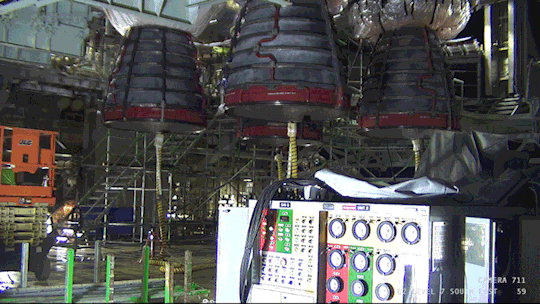
18 Miles
Our brawny SLS core stage is outfitted with three flight computers and special avionics systems that act as the “brains” of the rocket. It has 18 miles of cabling and more than 500 sensors and systems to help feed fuel and direct the four RS-25 engines.

733,000 Gallons
The stage has two huge propellant tanks that collectively hold 733,000 gallons of super-cooled liquid hydrogen and liquid oxygen. The stage weighs more than 2.3 million pounds when its fully fueled.

114 Tanker Trucks
It’ll take 114 trucks – 54 trucks carrying liquid hydrogen and 60 trucks carrying liquid oxygen – to provide fuel to the SLS core stage.

6 Propellant Barges
A series of barges will deliver the propellant from the trucks to the rocket stage installed in the test stand. Altogether, six propellant barges will send fuel through a special feed system and lines. The propellant initially will be used to chill the feed system and lines to the correct cryogenic temperature. The propellant then will flow from the barges to the B-2 Test Stand and on into the stage’s tanks.
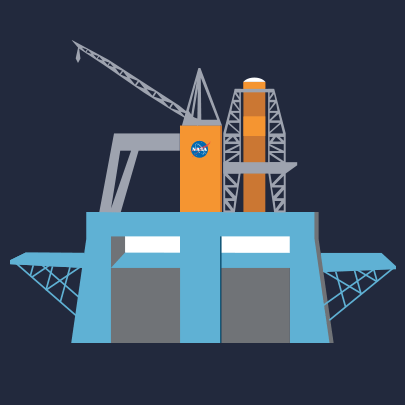
100 Terabytes
All eight of the Green Run tests and check outs will produce more than 100 terabytes of collected data that engineers will use to certify the core stage design and help verify the stage is ready for launch.
For comparison, just one terabyte is the equivalent to 500 hours of movies, 200,000 five-minute songs, or 310,000 pictures!

32,500 holes
The B-2 Test Stand has a flame deflector that will direct the fire produced from the rocket’s engines away from the stage. Nearly 33,000 tiny, handmade holes dot the flame deflector. Why? All those minuscule holes play a huge role by directing constant streams of pressurized water to cool the hot engine exhaust.

One Epic First
When NASA conducts the SLS Green Run Hot Fire test at Stennis, it’ll be the first time that the SLS core stage operates just as it would on the launch pad. This test is just a preview of what’s to come for Artemis I!
The Space Launch System is the only rocket that can send NASA astronauts aboard NASA’s Orion spacecraft and supplies to the Moon in a single mission. The SLS core stage is a key part of the rocket that will send the first woman and the next man to the Moon through NASA’s Artemis program.
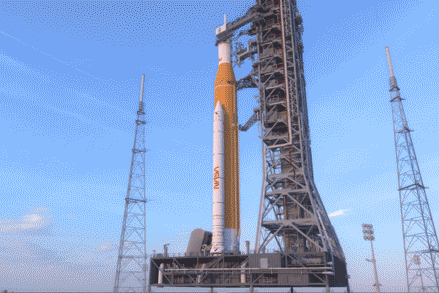
Make sure to follow us on Tumblr for your regular dose of space: http://nasa.tumblr.com
#nasa#artemis#moon#space launch system#rocket science#space#exploration#moon 2024#green run#rocket testing
916 notes
·
View notes
Photo
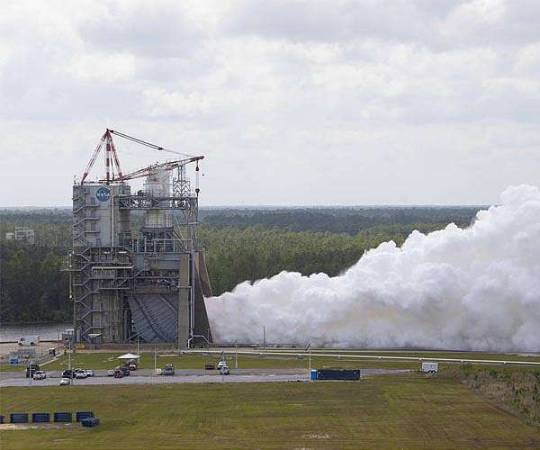
NASA Readies for Future Artemis Moon Missions with Rocket Engine Test Series NASA marked a significant milestone Sept. 30 in its plans for future missions to the Moon and, eventually, Mars with completion of an RS-25 single-engine Retrofit-2 test series at Stennis Space Center near Bay St. Louis, Mississippi. A full-duration hot fire of RS-25 developmental engine No. 0528 on the A-1 Test Stand at Stennis culminated a seven-test series to support development and production of new engines for the agency’s Space Launch System (SLS) rocket on future missions. “This successful test series for the Space Launch System RS-25 engine puts us one step closer to manufacturing the first new set of engines for future Artemis missions to the Moon,” said Johnny Heflin, manager of the SLS liquid engines office at NASA’s Marshall Space Flight Center in Huntsville, Alabama. “We are testing engine parts made with advanced manufacturing techniques that can reduce the cost of each engine by more than 30 percent yet still maintain the RS-25 engine’s reliability and high performance.” During the Sept. 30 hot fire, operators fired RS-25 developmental engine No. 0528, used for each of the seven tests in the series, for more than eight minutes (500 seconds), the same time required during an actual launch. The test series provided valuable information to Aerojet Rocketdyne, lead contractor for the SLS engines, as it produces engines for use after the Artemis IV mission to the Moon. Operators collected hot fire data to demonstrate and verify various engine capabilities, and to evaluate new engine components manufactured with cutting-edge and cost-saving technologies and reduce operational risk. Tested components included a 3D-printed pogo accumulator to dampen pressure oscillations that can cause flight instability and a main combustion chamber fabricated using a hot isostatic pressure (HIP) bonding technique. These components are significant early milestones in NASA’s and Aerojet Rocketdyne’s effort to maximize state-of-the-art manufacturing methods to significantly reduce the cost and time needed to build new RS-25 engines. The Sept. 30 test was delayed from its original date due to impacts from Hurricane Ida, which struck the Gulf Coast region on Aug. 29. The storm initially impacted propellant deliveries to the center, necessitating a delay as suppliers recovered full capabilities. “I am proud to see how the test team and our propellant suppliers overcame the impacts of Hurricane Ida to get us back to testing the RS-25,” Stennis RS-25 Project Manager Chip Ellis said. “With each test we learn more and more about the RS-25 engine and how it operates. And it is exciting to know that what we are doing contributes to the safety of the astronauts that will fly on SLS.” Four RS-25 engines, along with a pair of solid rocket boosters, will help power SLS at launch. Firing simultaneously, the engines will generate a combined 1.6 million pounds of thrust at liftoff and 2 million pounds during ascent. Previous RS-25 testing at Stennis began Jan. 9, 2015, and concluded April 4, 2019. During this period, NASA completed acceptance testing of former space shuttle main engines that will help power the first four SLS missions, conducted developmental and flightworthiness testing for all 16 new controllers (plus one spare) to be used on the heritage RS-25 engines, and demonstrated the ability of RS-25 engines to perform at the higher power level required to launch the super-heavy SLS rocket. The first hot fire of the most current series was conducted on Jan. 28, 2021. Over the course of the seven-part test series, which coincided with Green Run testing of the SLS core stage at Stennis, developmental engine No. 0528 underwent 3,650 seconds of hot fire. The schedule included six full-duration, hot fire tests of more than eight minutes (500 seconds) and one hot fire of just under 11 minutes (650 seconds). A full-duration test refers to the time the engine must fire during an actual launch in order to power SLS towards orbit. Longer duration hot fires are conducted to test the limits of engine performance. The Retrofit-2 test series followed major maintenance and upgrade projects on the A-1 Test Stand, including installation of a new NASA-designed-and-manufactured thrust vector control system on the structure that allows operators to “gimbal” test RS-25 engines, moving them on a tight circular axis. Gimbaling is a critical capability that ensures SLS can maintain a proper flight trajectory. Operators are scheduled to begin a follow-up Retrofit-3 test series, using RS-25 developmental engine No. 0525, on the A-1 Test Stand later this fall. The new series will continue to collect data for new engine production. NASA is building SLS as the world’s most powerful rocket. With Artemis, NASA will land the first woman and the first person of color on the lunar surface and establish long-term exploration at the Moon in preparation for human missions to Mars. SLS and the Orion spacecraft, along with the commercial human landing system and the Gateway in orbit around the Moon, are NASA’s backbone for deep space exploration. The agency is working towards the launch of the Artemis I uncrewed flight test in upcoming months, which will pave the way for future missions. RS-25 tests at Stennis are conducted by a combined team of NASA, Aerojet Rocketdyne and Syncom Space Services operators. Syncom Space Services is the prime contractor for Stennis facilities and operations. SSC-20210930-s00218 – RS-25 Hot Fire Test cutline: NASA conducts a full-duration RS-25 hot fire test on the A-1 Test Stand at Stennis Space Center on Sept. 30. The hot fire of more than 8 minutes marked the final test of a Retrofit-2 series to support development and production of new engines for the agency’s Space Launch System.
2 notes
·
View notes
Photo

NASA's SLS rocket will go through a second and longer hot fire test.
NASA needs to collect more data, since the first one lasted for only 67 seconds.
NASA will conduct a second hot fire test for the Space Launch System’s rocket core stage as early as the fourth week of February. It will be part of the rocket’s Green Run series of tests meant to assess the core stage and ensure it’s ready for the Artemis I mission, which will send an unmanned Orion spacecraft to the Moon. The rocket’s first ever hot fire test in mid—January, wherein all four of its RS-25 engines fired simultaneously, was cut short due to a problem with its hydraulic system. What was supposed to be an eight-minute burn lasted for only 67 seconds — NASA wants the second go to last longer than that to be able to collect more data.
The agency set an eight-minute goal for the second test, as well, since that’s how long it would take to send the rocket to space. According to NASA’s announcement, though, the Green Run team analyzed data from the first test firing and determined that four minutes would be enough to provide significant data that can help verify if the core stage truly is ready for flight. “Conducting a second hot fire test will allow the team to repeat operations from the first hot fire test and obtain data on how the core stage and the engines perform over a longer period that simulates more activities during the rocket’s launch and ascent,” NASA wrote.
To prepare for the second test, the Green Run team is analyzing data from the first one and drying and refurbishing the SLS engines. It will then take a month to refurbish the core stage and its engines after the second test before they can be shipped to NASA’s Kennedy Space Center in Florida for the Artemis I launch expected to happen later this year. It remains to be seen whether that timeline will be met when the Artemis program’s manned Moon landing probably won’t happen in 2024 like the previous administration had announced.
https://www.engadget.com/nasa-sls-rocket-second-hot-fire-test-045719776.html
5 notes
·
View notes
Link
NASA rocket test: Watch as NASA fires up its most powerful rockets to date NASA completed a static fire test of its Space Launch System (SLS) rockets as the space agency fired the future traveller to the Moon up. SLS are the rockets used for the Artemis program, which includes a variety of goals including building a lunar orbiter. The test saw all four of the RS-25 engines ignited in order to see if the rocket generated enough thrust to carry it and astronauts to the Moon. NASA live-streamed the event on its website, treating fans to the powerful spectacle. Smoke could be seen billowing away from the rockets as they ploughed through 700,000 gallons of fuel. NASA said the test, which was the final static fire test, went as smoothly as it could possibly go, with the space agency collecting valuable data for its future Moon missions. The test began at 8.40PM GMT and lasted for eight minutes. NASA said: “The hot fire got underway at around 4.40 PM EDT with all four RS-25 engines ignited successfully and produced 1.6 million pounds of thrust, as they will to launch the Artemis I mission to the Moon. “During the test the engines consumed more than 700,000 gallons of liquid oxygen and liquid hydrogen propellant. “The test was conducted with the core stage that will launch that first Artemis mission. READ MORE: NASA releases audio of Perseverance driving across Mars – listen “Engineers collect data on how the stage behaved during critical operations, such as throttling the engines up and down and moving the engines dynamically in a variety of patterns. “In coming days, engineers will scrutinise the data and determine if the stage is ready to be delivered to NASA’s Kennedy Space Center in Florida where it will be integrated with the twin solid rocket boosters already stacked in the Vehicle Assembly Building.” NASA is gearing up to send humans back to the Moon for the first time since 1972 as part of the Artemis mission. The first astronauts there, which will include the first woman to ever step foot on our lunar satellite, will be tasked with building a lunar base. READ MORE: NASA finally unravels the mystery of ‘dawn storm’ auroras on Jupiter This year, NASA will launch its first Artemis program rocket, Artemis 1, which will be an uncrewed mission to the Moon. The rocket will carry the Orion spacecraft, which will orbit the Moon, and is set to take off in late 2021. The spaceship will give experts the chance to understand how Orion performs in space in preparation for crewed missions in the near future. if(typeof utag_data.ads.fb_pixel!=="undefined"&&utag_data.ads.fb_pixel==!0)!function(f,b,e,v,n,t,s)if(f.fbq)return;n=f.fbq=function()n.callMethod?n.callMethod.apply(n,arguments):n.queue.push(arguments);if(!f._fbq)f._fbq=n;n.push=n;n.loaded=!0;n.version='2.0';n.queue=[];t=b.createElement(e);t.async=!0;t.src=v;s=b.getElementsByTagName(e)[0];s.parentNode.insertBefore(t,s)(window,document,'script','https://connect.facebook.net/en_US/fbevents.js');fbq('init','568781449942811');fbq('track','PageView') Source link Orbem News #date #fires #NASA #Powerful #rocket #Rockets #Test #watch
0 notes
Text
NASA proceeds with plans for second hot fire test🚀🌌🚀
NASA proceeds with plans for second hot fire test🚀🌌🚀
NASA plans to conduct a second Green Run hot fire test as early as the fourth week in February with the Space Launch System (SLS) rocket’s core stage that will launch the Artemis I mission to the Moon. The Green Run is a comprehensive assessment of the rocket’s core stage prior to launching Artemis missions.While the first hot fire test marked a major milestone for the program with the firing of…
View On WordPress
0 notes
Text
What Would These Astronauts Put in Their #NASAMoonKit?

NASA is hard at work to land the first woman and the next man on the Moon, and we want to know: what would you pack for a trip to the Moon?
We will be soon conducting our last in a series of Green Run tests for the core stage of our Space Launch System (SLS) — the most powerful rocket ever built.
The series of tests is designed to gradually bring the rocket stage and all its systems to life for the first time — ensuring that it’s ready for missions to the Moon through the Artemis program.
To mark this critical time in the history of American spaceflight, we’ve been asking people like you — what would you take with you on a trip to the Moon? Social media users have been regaling us with their images, videos, and illustrations with the hashtag #NASAMoonKit!
Looking for a little inspiration? We asked some of our astronauts and NASA leaders the same question:
1. NASA Astronaut Chris Cassidy

NASA astronaut Chris Cassidy recently took this photo from the International Space Station and posted it to his Twitter account with this caption:
“If I was on the next mission to the Moon, I would have to bring this tiny spaceman with me! He’s flown with me on all of my missions and was in my uniform pocket for all the SEAL missions I have been a part of. Kind of like a good luck charm.”
2. European Space Agency Astronaut Tim Peake

European Space Agency astronaut Tim Peake asked his two sons what they would take with them to the Moon. This is what they decided on!
3. NASA Astronaut Scott Tingle
youtube
Based on previous missions to space, NASA astronaut Scott Tingle would put a can of LiOH, or Lithium Hydroxide, into his #NASAMoonKit.
A LiOH can pulls carbon dioxide out of the air — very important when you're in a closed environment for a long time! Apollo 13 enthusiasts will remember that the astronauts had to turn off their environmental system to preserve power. To keep the air safe, they used LiOH cans from another part of the vehicle, but the cans were round and the fitting was square. Today we have interoperability standards for space systems, so no more square pegs in round holes!
4. NASA Astronaut Drew Morgan
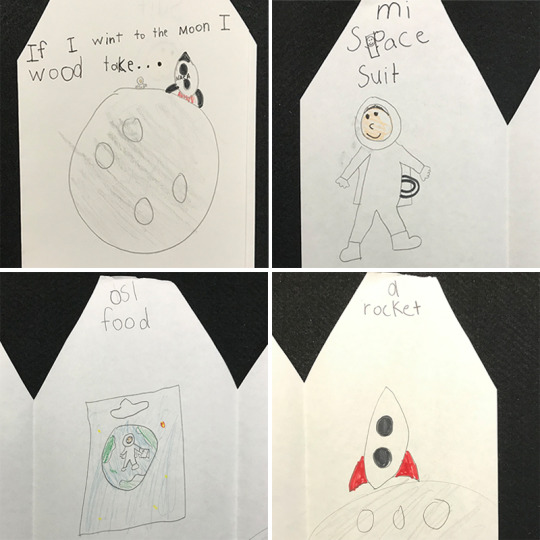
NASA astronaut Drew Morgan received some feedback from his youngest daughter when she was in kindergarten about she would put into her #NASAMoonKit.
5. Head of Human Spaceflight Kathy Lueders

Although Kathy Lueders is not an astronaut, she is the head of human spaceflight at NASA! Her #NASAMoonKit includes activities to keep her entertained as well as her favorite pillow.
6. NASA Astronaut Kenneth Bowersox
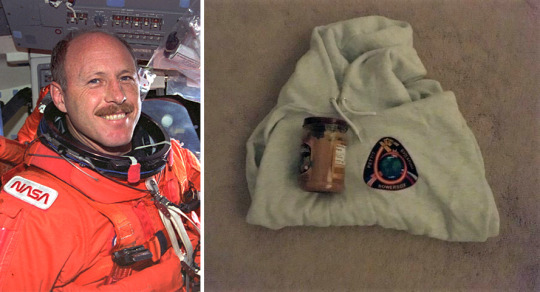
NASA astronaut Kenneth Bowersox knows from his past space shuttle experience what the “perfect space food” is — peanut butter. He would also put a hooded sweatshirt in his #NASAMoonKit, for those long, cold nights on the way to the Moon.
7. NASA Astronaut Michael Collins
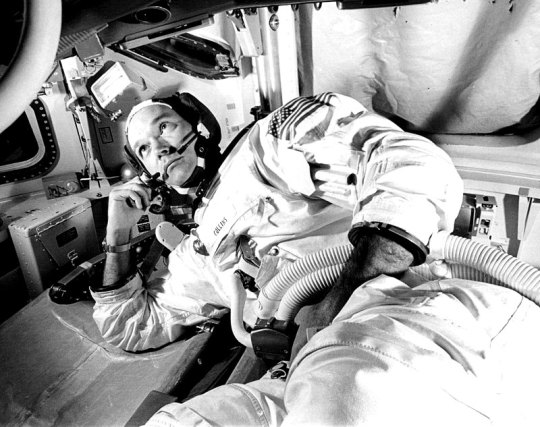
NASA astronaut Michael Collins has actually made a real-life #NASAMoonKit — when he flew to the Moon on the Apollo 11 mission! But for this time around, he tweeted that would like to bring coffee like he did the first time — but add on a good book.
How to Show Us What’s In Your #NASAMoonKit:
There are four social media platforms that you can use to submit your work:
Instagram: Use the Instagram app to upload your photo or video, and in the description include #NASAMoonKit
Twitter: Share your image on Twitter and include #NASAMoonKit in the tweet
Facebook: Share your image on Facebook and include #NASAMoonKit in the post
Tumblr: Share your image in Tumblr and include #NASAMoonKit in the tags
If your #NASAMoonKit catches our eye, we may share your post on our NASA social media accounts or share it on the Green Run broadcast!
Click here for #NASAMoonKit Terms and Conditions.
Make sure to follow us on Tumblr for your regular dose of space: http://nasa.tumblr.com
551 notes
·
View notes
Photo

NASA Mega Moon Rocket Passes Key Test, Readies for Launch The largest rocket element NASA has ever built, the core stage of NASA’s Space Launch System (SLS) rocket, fired its four RS-25 engines for 8 minutes and 19 seconds Thursday at NASA’s Stennis Space Center near Bay St. Louis, Mississippi. The successful test, known as a hot fire, is a critical milestone ahead of the agency’s Artemis I mission, which will send an uncrewed Orion spacecraft on a test flight around the Moon and back to Earth, paving the way for future Artemis missions with astronauts. Engineers designed the eight-part Green Run test campaign to gradually bring the SLS core stage to life for the first time, culminating with the hot fire. The team will use data from the tests to validate the core stage design for flight. “The SLS is the most powerful rocket NASA has ever built, and during today’s test the core stage of the rocket generated more than 1.6 million pounds of thrust within seven seconds. The SLS is an incredible feat of engineering and the only rocket capable of powering America’s next-generation missions that will place the first woman and the next man on the Moon,” said acting NASA Administrator Steve Jurczyk. “Today’s successful hot fire test of the core stage for the SLS is an important milestone in NASA’s goal to return humans to the lunar surface – and beyond.” NASA previously conducted a hot fire test of the SLS core stage Jan. 16. The four RS-25 engines fired together for the first time for about one minute before the test ended earlier than planned. Following data analysis, NASA determined a second, longer hot fire test would provide valuable data to help verify the core stage design for flight, while posing minimal risk to the Artemis I core stage. During the second hot fire test, the stage fired the engines for a little more than eight minutes, just like it will during every Artemis launch to the Moon. The longer duration hot fire tested a variety of operational conditions, including moving the four engines in specific patterns to direct thrust and powering the engines up to 109% power, throttling down and back up, as they will during flight. “This longer hot fire test provided the wealth of data we needed to ensure the SLS core stage can power every SLS rocket successfully,” said John Honeycutt, manager for the SLS Program at NASA’s Marshall Space Flight Center in Huntsville, Alabama. “During this test, the team conducted new operations with the core stage for the first time, repeated some critical operations, and recorded test data that will help us verify the core stage is ready for the first and future SLS flights for NASA’s Artemis program.” The two propellant tanks in the SLS core stage collectively hold more than 733,000 gallons of supercold liquid hydrogen and liquid oxygen to help fuel the RS-25 engines at the bottom of the stage. The core stage has a complex network of flight software and avionics systems designed to help fly, track, and steer the rocket during launch and flight. Prior tests in the Green Run test series evaluated the integrated functionality and performance of the core stage’s avionics systems, propulsion systems, and hydraulic systems. “Today is a great day for NASA, Stennis and this nation’s human space exploration program. This final test in the Green Run series represents a major milestone for this nation’s return to the Moon and eventual mission to Mars,” said Stennis Center Director Richard Gilbrech. “So many people across the agency and the nation contributed to this SLS core stage, but special recognition is due to the blended team of test operators, engineers, and support personnel for an exemplary effort in conducting the test today.” Test teams at Stennis supervised a network of 114 tanker trucks and six propellant barges that provided liquid propellant through the B-2 Test Stand to the core stage. Test teams also delivered operational electrical power, supplied more than 330,000 gallons of water per minute to the stand’s flame deflector, and monitored structural interfaces of both the hardware and the stand. Testing the SLS rocket’s core stage is a combined effort for NASA and its industry partners. Boeing is the prime contractor for the core stage and Aerojet Rocketdyne is the prime contractor for the RS-25 engines. Next, the core stage for SLS will be refurbished, then shipped to NASA’s Kennedy Space Center in Florida. There, the core stage will be assembled with the solid rocket boosters and other parts of the rocket and NASA’s Orion spacecraft on the mobile launcher inside the Vehicle Assembly Building at Kennedy in preparation for Artemis I. SLS, Orion, and the ground systems at Kennedy, along with the human landing system and the Gateway in orbit around the Moon, are NASA’s backbone for deep space exploration. SLS is the only rocket that can send Orion, astronauts, and supplies to the Moon on a single mission. The exploration of the Moon with NASA’s Artemis program includes preparations to send astronauts to Mars as part of America’s Moon to Mars exploration approach. IMAGE....The core stage for the first flight of NASA’s Space Launch System rocket is seen in the B-2 Test Stand during a second hot fire test, Thursday, March 18, 2021, at NASA’s Stennis Space Center near Bay St. Louis, Mississippi. The four RS-25 engines fired for the full-duration of 8 minutes during the test and generated 1.6 million pounds of thrust. The hot fire test is the final stage of the Green Run test series, a comprehensive assessment of the Space Launch System’s core stage prior to launching the Artemis I mission to the Moon.
2 notes
·
View notes
Text
NASA's SLS rocket will go through a second and longer hot fire test
NASA’s SLS rocket will go through a second and longer hot fire test
NASA will conduct a second hot fire test for the Space Launch System’s rocket core stage as early as the fourth week of February. It will be part of the rocket’s Green Run series of tests meant to assess the core stage and ensure it’s ready for the Artemis I mission, which will send an unmanned Orion spacecraft to the Moon. The rocket’s first ever hot fire test in mid—January, wherein all four of…
View On WordPress
0 notes
Text
NASA's SLS rocket will go through a second and longer hot fire test
NASA’s SLS rocket will go through a second and longer hot fire test
NASA will conduct a second hot fire test for the Space Launch System’s rocket core stage as early as the fourth week of February. It will be part of the rocket’s Green Run series of tests meant to assess the core stage and ensure it’s ready for the Artemis I mission, which will send an unmanned Orion spacecraft to the Moon. The rocket’s first ever hot fire test in mid—January, wherein all four of…

View On WordPress
0 notes
Text
NASA's SLS rocket will go through a second and longer hot fire test
NASA’s SLS rocket will go through a second and longer hot fire test
NASA will conduct a second hot fire test for the Space Launch System’s rocket core stage as early as the fourth week of February. It will be part of the rocket’s Green Run series of tests meant to assess the core stage and ensure it’s ready for the Artemis I mission, which will send an unmanned Orion spacecraft to the Moon. The rocket’s first ever hot fire test in mid—January, wherein all four of…
View On WordPress
0 notes
Text
NASA Conducts Test of SLS Rocket Core Stage for Artemis I Moon Mission
http://nasa.gov/press-release/nasa-conducts-test-of-sls-rocket-core-stage-for-artemis-i-moon-mission via #NASA_APP
0 notes